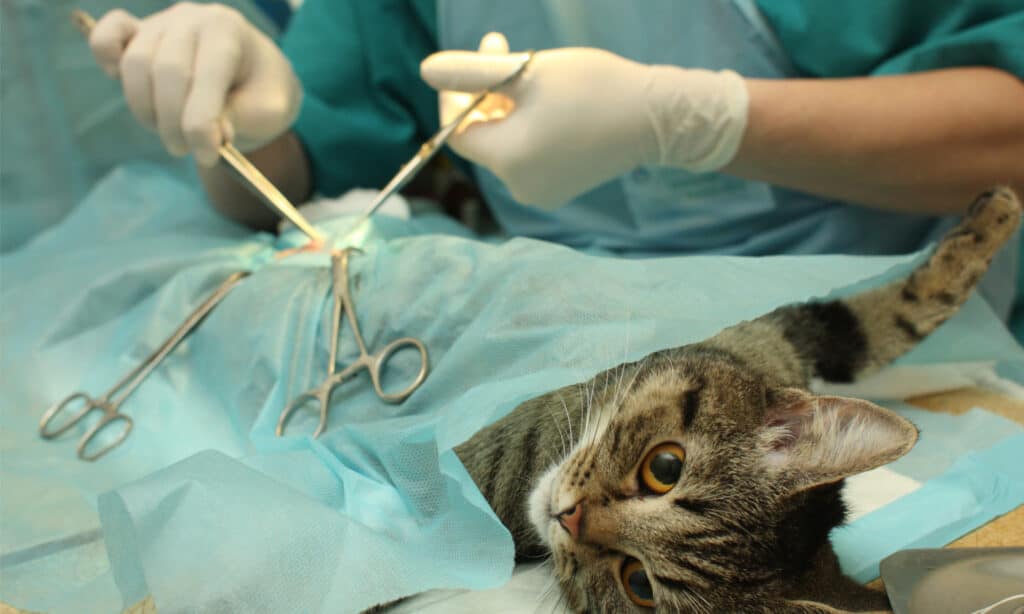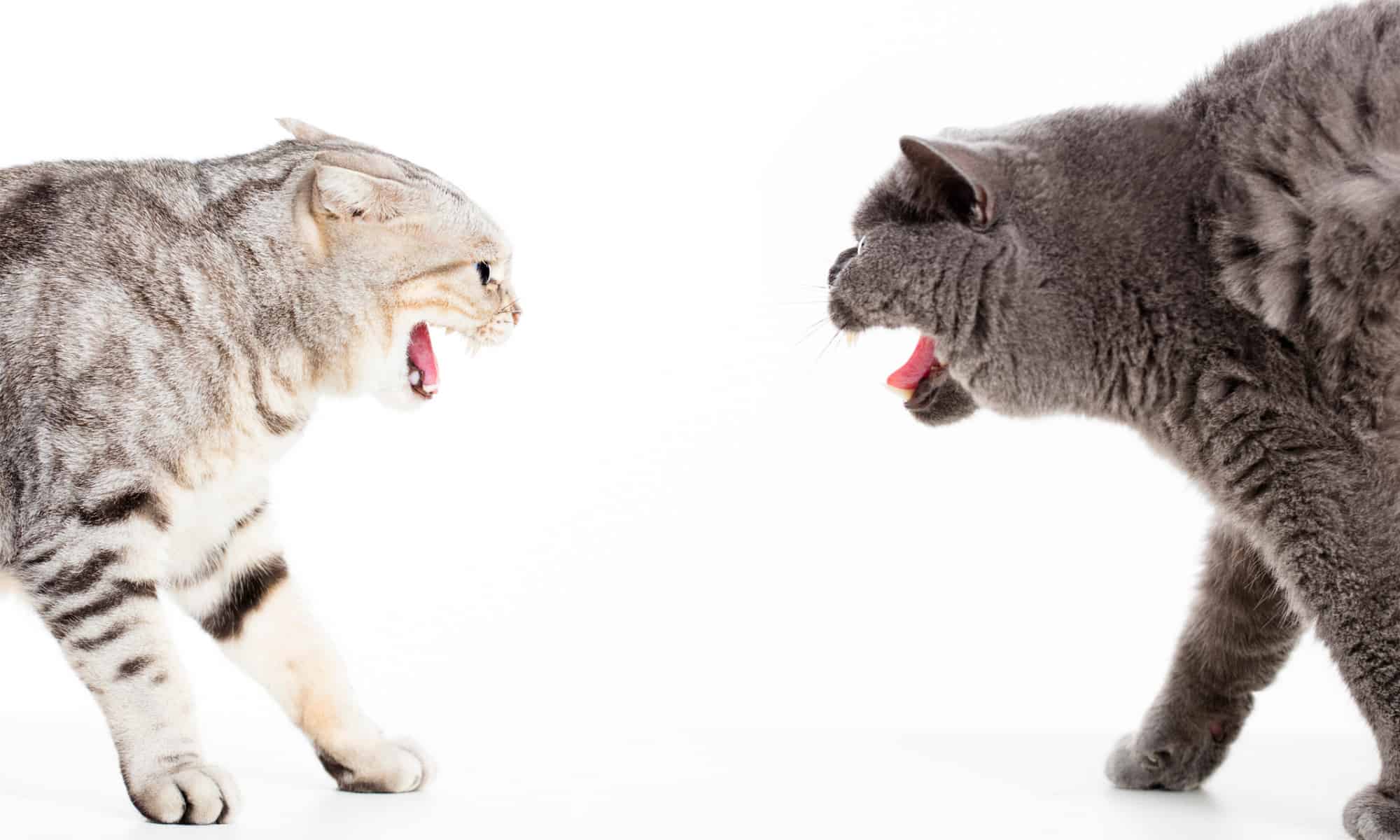Cats are fantastic creatures we adore. They can be a little offensive when they’re getting ready to mate and all through the process of being in heat. Understanding feline behavior is beneficial, especially if you live with cats.
Many people are curious about why cats make noise when mating. A cat in heat may appear intimidating. But the screams and meows are most audible and scandalous during copulation.
Cats start meowing when they are in heat to attract males’ attention. This article aims to look into cat courtship and mating to help you address this question.
What Makes Female Cats Scream When Mating?
If your female cat is in heat, you’ve probably heard the loud trilling call she makes for about a week during her heat cycle. Some cats are noisier, while others are slightly quieter and may only have one or two noisy days.
Cats make a few loud noises when mating or are ready to mate. During mating, female cats cry because the male reproductive organs scratch them. Male cats respond to talkative female cats with specific calls and sounds.
The male cat’s penis has small spikes on it. Those spikes provide the female cat with the stimulation it needs to ovulate. Hence, making it an essential part of the process.
The noise is key to the stimulation needed for ovulation and pregnancy. Cats are simulation-based ovulators, so the ovaries will not deliver an egg except while mating.
Like most animals, cats rarely become pregnant after the first mating. Cats’ chances of becoming pregnant increase with each mating. It explains why they try to mate multiple times per day.
Many people believe that aroused stimulation is unpleasant for a female cat. It’s an assumption that may explain why the Queens are usually agitated toward male cats right after mating. Because of this hostile trait, Tomcats will usually abandon a Queen after mating until she makes mating sounds again.
Is It Painful for Female Cats to Mate?
As earlier mentioned, a cat’s penis is prickly. The genitalia of cats is covered in tiny keratinized spines, which stimulate female ovulation. These spines also keep the penis from falling out during intercourse.
Contrary to popular belief, female spines do not cause pain or bleeding. They simply trigger a hormonal shock by stimulating the neuroendocrine system (LH). And this doesn’t get activated until 23 and 36 hours after intercourse.
Following intercourse, the female’s behavior changes erratically. After the male withdraws the penis, the pupils begin to dilate, and half of the females meow loudly. Then, there is a likely attack on the males fiercely after mating, spinning, and licking their genital area for 2 to 7 minutes.
Yes, female cats may experience pain during mating because the penis of a male cat contains small spines that are required for ovulation.
What Happens to Female Cats After Mating?
Female cats can appear strange immediately after mating. They exhibit a wide range of behaviors that are entirely out of character at other times but occur every time they mate.
Female cats are extremely unpredictable after mating. They may even be more hostile towards you until they are calm. Hence, it’s wise to proceed with caution when approaching a newly mated Queen.
Female cats frequently scare away Tomcats that linger too long after mating. They need time to process the hormones released during the first mating. And it will take some time for them to be ready to mate again.
After the Tomcat has left, most Queens will alternate between grooming themselves, calling, and rolling around. They may move unusually quickly between actions, partly because the same hormones flood her body and confuse her.
However, as the Queen prepares to mate again, this hysteric period often quickly passes. Most Queens will mate 3-4 times within the space of 2 days. However, they may be ready to mate again in as little as 30 minutes and will begin calling to entice the Tomcat once again.
Cats aren’t usually picky about who comes to mate with when they’re ready. So it’s not unusual for Queens to mate with many males based on availability. Technically, a litter of kittens could have multiple fathers.

Female cats may mate with multiple males, so it’s possible that this litter of kittens has multiple fathers.
©iStock.com/bozhdb
Why Female Cats Roll After Mating
The rolling behavior is not always apparent. Of course, it’s a response to mating and the hormones connected with ovulation. But it could be a way for her to spread her scent in an area, relieve tension, or even try to get rid of the Tomcat’s scent in case another male cat is interested in mating.
While there are many likely explanations for this behavior, one thing is sure: it is an entirely natural response to mating and is nothing to break a sweat about.
Do Male Cats Make Noise During Mating Season?
Male cats scream when they are in heat. Tomcats yowl a lot at night to make themselves easier to hear. Like their female counterparts, they announce they are now ready to become a father.
Male cats are also more agitated toward other cats during this period. They frequently yell to frighten the other tomcats in the area.
When a female and a male cat finally meet, they begin courting and copulating. They can have intercourse for as little as 11 minutes or as long as 90 minutes! And as earlier implied, cats are not known for monogamy.
How Frequently Do Cats Mate?
Cats mate practically all year. It’s around February and into December, but the breeding season is generally regarded as March through September.
Female cats’ oestrus cycles begin when they reach puberty. This is usually between 5 and 10 months from birth.
The change of seasons (i.e., Summer/Spring), the cat’s age, weight, breed, and general health are all factors that determine when a cat goes into heat. However, note that cats can become pregnant and give birth at any time of year if under ideal conditions.
Rescuers fear “Kitten Season” because it implies the new litter of kittens will eliminate any chance of adopting older cats, including previous year’s kittens, at shelters. Hence, it’s key to spay and neuter pet cats.
Cats’ heat cycles are called “polyestrous,” which occur regularly during their reproductive years. They go through heat cycles that can last a few days or two weeks. It’s a cycle that happens every two to three weeks.
Nobody knows whether heat cycles are painful for cats. It’s easy to see how a female cat may seem to be in heat almost all the time. However, they seem highly uncomfortable based on their loud noise and other signs.
Why Is Spaying/Neutering Your Cats Necessary?
This article is informative because many people breed cats responsibly, and many others are interested in getting into the cat breeding business.
However, most cat owners should neuter/spay their pets. Kittens and cats are overpopulated, with many more kittens born each year.
With just 4 kittens per litter, 20 kittens per year from a single Queen is a possibility. Some grow up to be healthy stray and feral cats, and a Queen can have up to five litters of kittens per year.
Female cats are primarily vulnerable to reproductive organ illness, including uterine infection (pyometra). Pyometra is a fast-acting infection that requires aggressive treatment. Caring for a cat with pyometra can be challenging, and it’s easy to miss the early signs of the condition until it’s too late.
It’s, therefore, critical to be aware of the signs and symptoms of pyometra or to have your cat spayed before it occurs.

Spaying and neutering cats ensures that there will be no unwanted kittens.
©iStock.com/DimaBerkut
When Can I Have My Cat Spayed/Neutered?
Spaying or neutering kittens as young as 8 weeks old is generally considered safe. It’s critical to prevent Tomcats from marking their territory with urine and female heat cycles.
It’s best to discuss the procedure with your veterinarian to ensure the process is completed as soon as possible. It will help you avoid unwanted pregnancies and other related issues with unaltered animals.
Adopting directly from a shelter is a fantastic option because it ensures that they are neutered or spayed before arriving at your home.
Conclusion
We now know that cats scream during mating because the male’s spiked reproductive organs cause pain for the female. Males will occasionally respond with their shouts in response to this.
Also, it’s vital to know that cats have love bites as a display of power. So, they also shout because the male bites the female at the back of her neck to keep her in place.
At this point, you should have a rich explanation of why both males and female cats scream while mating. You should be convinced about taking that decision to go spay or neuter your cats.
Thank you for reading! Have some feedback for us? Contact the AZ Animals editorial team.








